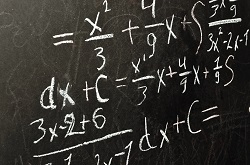How neural mechanisms impact arithmetic processing
Although many animal species can identify and compare numerical quantities, only humans can represent these quantities as abstract symbols. In other words, only humans can add, subtract, multiply and divide. Yet just because we can do something doesn’t necessarily mean we are any good at it – a fact made abundantly clear by the more than 20 % of 15-year-old European students who rank as low achievers in mathematics. ‘Because low maths competence can have dire economic and social effects, improving our knowledge of the neural mechanisms involved in arithmetic processing is critical to teaching and reducing low achievement,’ says PISA project coordinator Jerome Prado. There is currently a debate in maths education on the benefits of using calculation procedures versus retrieval-based strategies. To help provide an answer, the EU-funded PISA project used functional magnetic resonance imaging (fMRI) to test the hypothesis that fronto-parietal brain regions support automatised calculation procedures that can be as efficient as retrieval during arithmetic calculation. ‘We aimed to capitalise on the idea that, if problems are solved with procedural strategies, abstract automatic procedures should be activated by the simple presentation of an arithmetic sign and independently of the operands,’ says Prado. Calculation versus retrieval The central question posed by PISA researchers was whether calculation procedures could be elicited automatically and effortlessly in the brain. Although most studies suggested that calculation is less efficient than retrieval, at least for simple, single-digit arithmetic problems, PISA researchers suspected that this understanding was misleading. To find out, they measured the brain activity of adults and children being presented single-digit addition and multiplication problems. To isolate activity associated with the arithmetic sign, trials presenting only the arithmetic sign were also included. In these cases, participants were simply instructed to look at the signs. ‘We found that the simple presentation of the addition sign – compared to the multiplication sign – was associated with enhanced activity and communication within a fronto-parietal network,’ explains Prado. ‘Furthermore, the neural activity associated with the addition sign in a brain region predicted the size of an arithmetic priming effect measured in a behavioural task outside the scanner.’ Automatic addition In line with recent behavioural studies, PISA demonstrated that addition signs are associated with the automatic activation of procedures that may be spatial in nature and used by adults to solve simple addition problems. ‘What this indicates is that arithmetic procedures can be automatised and that single-digit arithmetic learning does not necessarily involve a shift from procedural to retrieval strategies, but rather a shift from effortful to automatised procedures,’ says Prado. Easy as 1, 2, 3 According to Prado, this research is of great interest because of the fundamental role that procedural knowledge plays in maths education. Although a wide range of teaching methods are used across the EU, there is general agreement that both fluency in recalling maths facts and procedural skills are important. Yet, most cognitive studies point to the superiority of fact retrieval over procedural strategies in simple arithmetic. ‘Our results challenge this claim and provide the necessary groundwork for future studies to investigate the extent to which automatisation of procedures can be affected by teaching methods,’ says Prado. ‘This will have the potential of increasing achievement among students – a key goal of many EU countries.’







